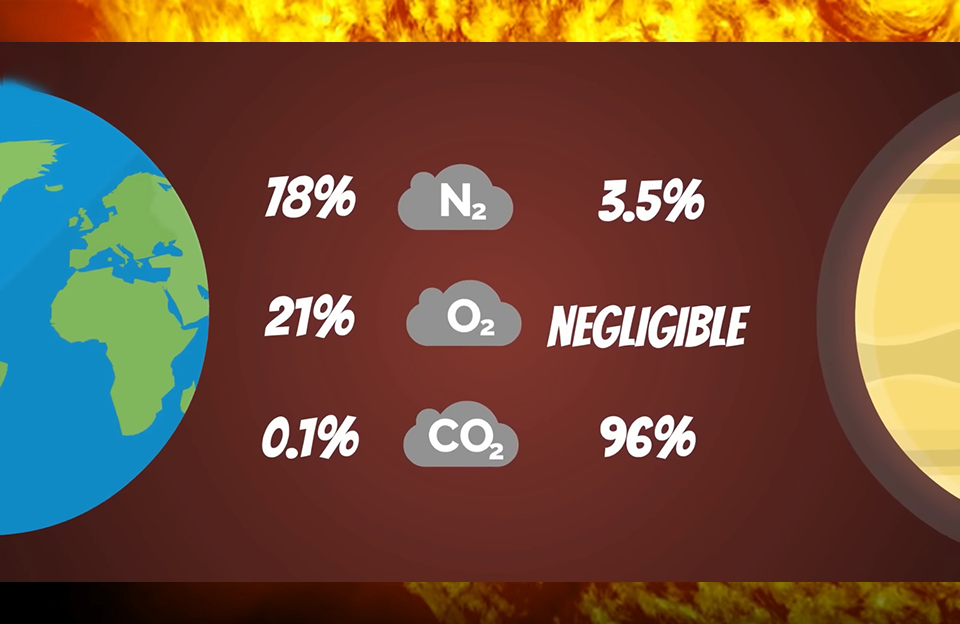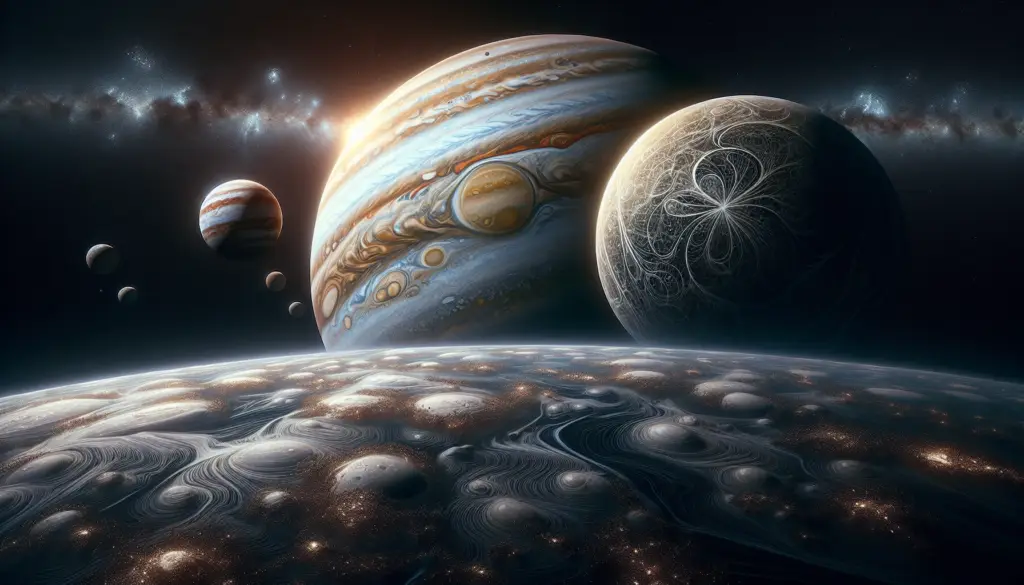Venturing Beyond the Comforts of Earth
As we leave behind the familiar blue expanse of our home planet and the serene presence of the Moon, we find ourselves traversing the vast emptiness of space, venturing ever deeper into the mysteries of our solar system. The journey before us leads us to a world that stands in stark contrast to the lush beauty of Earth – the planet Venus, often hailed as the “twin” of our own, yet a realm that seems more akin to the depths of Dante’s Inferno.
The Hellish Landscapes of Venus
Situated some 40 million kilometers from Earth, Venus shines brightly in the sky, a testament to its status as the third-brightest celestial body after the Sun and the Moon. Yet, this apparent beauty belies the true nature of this world, where the sun rises not in the east, but in the west, and the promise of a new day is met with a relentless barrage of hellish conditions.
As we gaze upon Venus, we are confronted with a planet that is the antithesis of our own. Where Earth is a verdant paradise, teeming with life and the laughter of its inhabitants, Venus is a realm of fire and fury, where the surface is constantly wracked by the eruption of countless volcanoes and the skies rain down sulfuric acid. The atmospheric pressure on Venus is a staggering 90 times greater than that of Earth, a crushing weight that would instantly flatten any unprotected human being.
Related Article : History and impact of the World Wars
Unraveling the Mysteries of Venus
How, then, do we know so much about this hellish world, a world that lies millions of kilometers from our own? The answer lies in the remarkable feats of human ingenuity and the unwavering pursuit of scientific knowledge.
Beginning in the 1960s, the Soviet Union launched a series of ambitious missions to Venus, with the goal of unraveling the mysteries of this enigmatic planet. The Venera program, as it was known, sent a succession of probes to the Venusian surface, each one facing the formidable challenges of the planet’s hostile environment.
Despite the immense obstacles, these pioneering missions were able to gather invaluable data and even capture the first images of the Venusian landscape. The Venera 3 probe, for instance, became the first human-made object to land on another planet, though it was ultimately destroyed upon impact. Later missions, such as Venera 7 and Venera 9, were able to transmit data and imagery back to Earth, providing us with our first glimpses of the true nature of Venus.
Unraveling the Mysteries of Venus
These early explorations of Venus were just the beginning. Over the years, a multitude of spacecraft from various space agencies, including the United States and Japan, have been sent to study this enigmatic world, each one adding to our understanding of its unique characteristics.
One of the most significant contributions came from NASA’s Pioneer Venus Orbiter, launched in 1978. This remarkable spacecraft spent over a decade in orbit around Venus, mapping its surface and revealing the presence of towering mountains and deep canyons that rival the grandeur of Earth’s own natural wonders.
Through these concerted efforts, we have come to understand that Venus is a world of extremes, where the intense heat and crushing atmospheric pressure have created a landscape that is utterly inhospitable to life as we know it. The planet’s thick, cloud-laden atmosphere, which reflects an astonishing 70% of the Sun’s light, is composed primarily of carbon dioxide, a gas that is anathema to the delicate balance of life on our own planet.
Venturing to the Scorching Realm of Mercury
With a newfound appreciation for the harsh realities of Venus, we now turn our gaze towards the innermost planet of our solar system – Mercury. Situated a mere 35 million kilometers from the Sun, this tiny world presents a stark contrast to the fiery landscapes of its celestial neighbor.
As we approach Mercury, the first thing that strikes us is the stark blackness of its sky. Unlike the familiar azure hue of Earth’s atmosphere, the heavens above Mercury are a pitch-black void, devoid of any discernible color. This is a consequence of the planet’s complete lack of an atmosphere, a feature that sets it apart from the other worlds we have encountered thus far.
The Enigmas of Mercury
Despite its diminutive size, Mercury is a world of remarkable contradictions. While it is the closest planet to the Sun, it also plays host to vast deposits of ice, hidden away in the depths of its craters and shadowed regions. This discovery, made by NASA’s MESSENGER spacecraft in 2012, has captivated the scientific community, raising tantalizing questions about the origins and persistence of this ice in the face of the planet’s scorching temperatures.
Mercury’s unique characteristics extend beyond its icy enigmas. Unlike the other planets in our solar system, which rotate in a counter-clockwise direction, Mercury spins in the opposite direction, causing the Sun to rise in the west and set in the east. This peculiar behavior is further compounded by the planet’s exceptionally slow rotation, with a single Mercurian day lasting the equivalent of over two years on Earth.
Unraveling the Mysteries of Mercury
Our understanding of Mercury has been shaped by a series of groundbreaking space missions, each one adding to the tapestry of knowledge about this enigmatic world. The Mariner 10 spacecraft, launched in 1973, was the first to visit Mercury, capturing the first-ever images of the planet’s surface and revealing its cratered, barren landscape.

Building upon this foundation, NASA’s MESSENGER mission, which orbited Mercury from 2004 to 2015, provided us with an unprecedented level of detail about the planet’s geology, composition, and even the presence of those tantalizing ice deposits. These discoveries have sparked renewed interest in the exploration of Mercury, with future missions already in the planning stages to further unravel the mysteries of this enigmatic world.
Journeying into the Past, Shaping the Future
As we reflect on our journey from the familiar confines of Earth to the alien landscapes of Venus and Mercury, we are struck by the realization that our exploration of the solar system is, in many ways, a journey into the past. The information and insights we glean from these distant worlds not only shed light on the formation and evolution of our own planet, but also hold the potential to unlock the secrets of the very origins of life itself.
In the pages that follow, we will continue our voyage of discovery, delving deeper into the wonders and mysteries of our solar system. From the icy realms of the outer planets to the tantalizing prospects of human settlement on other worlds, our journey promises to be one of both scientific revelation and boundless imagination. So join us as we venture forth, ever deeper into the vast expanse of the cosmos, unraveling the secrets of the universe, one step at a time.


